Large global enterprises have always thrived on highly customizable ERP solutions. As their enterprise structures are complex, and their needs diverse, OOTB ERP solutions often fall short of their needs. Despite the business value that such ERP solutions hold for global enterprises, they can rapidly turn into a legacy burden. This is where a two-tier ERP strategy comes into play.
Many enterprises approach ERP Transformation as they would approach any other IT Project. It is planned and managed from a technical perspective and is guided by the rationale that it is easier to implement. The reasoning has little to do with the enterprise’s actual needs, but more to fit the whims of the solution provider. Consequently, the whole transformation exercise turns out to be lengthy, costly and disappointing. In light of the original intention, the value that is unlocked is miniscule and sometimes even non-existent. It also doesn’t help that it takes a lot of time to realize these projects. It is all too common to see solution architects being overly concerned with the finer details, so much so that they forget about it’s business case.
Value forms the backbone of every business transformation project. Naturally, it is then necessary to figure out where the value originates from and how it can be further optimized. Following this approach allows enterprises to reduce the complexity and increase the flexibility of their ERP usage which in turn, allows the enterprise to embark on a journey of digital transformation. Building a cognitive enterprise necessitates the adoption of digital tools across all parts of the enterprise. This would result in improved operational excellence, and an improved customer experience.
Recent iterations of ERP platforms take full advantage of AI/ML technologies and adopt a modular approach to their processes. Unfortunately, enterprises often implement these platforms without undoing the complexity and rigidity that earlier versions came with. It is only inevitable that such an ERP transformation ends up being an expensive and dissatisfactory affair.
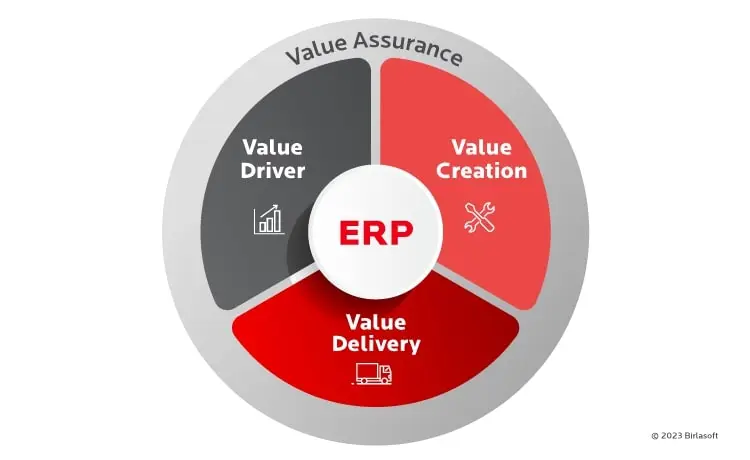
Following a value-oriented approach helps avoid this tragic outcome. To combat this, we at Birlasoft put together an 8-step playbook that helps you create a strategy and a roadmap for ERP Transformation. This approach boils down to two steps:
The first step is to identify the elements that drive the value. This will shed light on the areas and processes where the new ERP implementation could help. The implementation’s success will be reflected in observable and quantifiable returns, all while catalysing the broader digital transformation effort.
The second step is to introduce modularity and flexibility. The goal here would be to keep the tech stack lean, while adding new capabilities and enhancing existing ones. Adopting an agile approach here would help with convincing all stakeholders and secure resources to continue with more holistic digital transformation efforts.
Even in the presence of a value-based approach, success can only happen when there is strong governance, a robust framework to manage organizational change, and transparency. This approach is predicated upon four pillars. Let’s examine them in greater detail:
Value Drivers
Value drivers vary greatly between enterprises. These include:
- Harmonization: Reduce complexity by using standardized processes and data models through the business. When done right, harmonization can deliver 20% to 25%.
- Standardization: Cut back on custom features and fully adopt out-of-the-box features that next-gen ERP solutions come with. This approach can help harvest anywhere between 10% to 25% of value.
- Innovation: Next gen ERP platforms ship with an array of new functions that include, but aren’t limited to Cloud Integration, AI and ML for data analysis and upgraded integration capabilities. These functions can help enterprises digitize their operations. When done skillfully this can drive 20% to 30% of the overall value realization efforts.
- Differentiation: There are different ways to drive customization; deploying add-ons, special-purpose AI tools, and other digital/analytics tools. The approach needed is to ensure that the investment and effort is put only in an area where the enterprise can get measurable result that differentiates it in the market it operates. This has the potential to drive upto 40% of the overall value realization.
The exact approach is not easy to decide. It needs close collaboration between IT and Business.
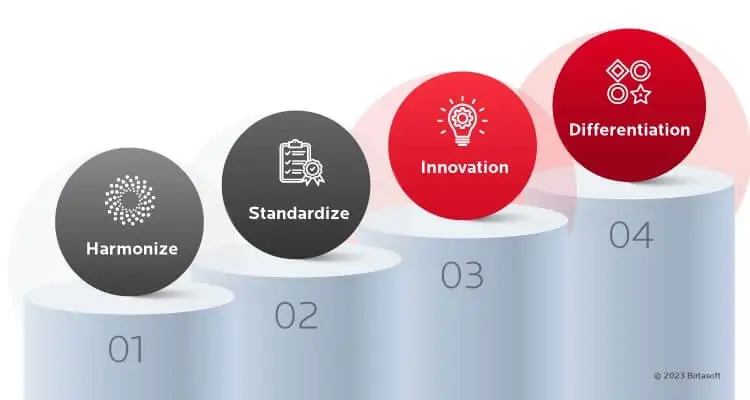
Birlasoft has a robust framework that takes into consideration various business considerations i.e., business functions, business structure, IT, Organization Change that would impact the decision. Utilizing this framework helps decide on the overall approach and more specifically, the deployment approach. We also have a Process Mining framework called A3 and a slew of best practices based on industry standards that can be leveraged for the creation of a Global Process Design and Fit to standard approach.
Value Creation
The implementation approach and the deployment processes will collectively dictate the value creation process. The deployment must be a constituent of the larger ecosystem and be linked closely and seamless with other parallel initiatives.
Enterprises need to think holistically and actively consider all aspects of the business. It is only in such a framework that the utility of an Enterprise Architecture framework is best observed. Value creation requires agility and flexibility which means that the enterprise should be able to enhance the ERP solution in the right place, the right time and with the right speed.
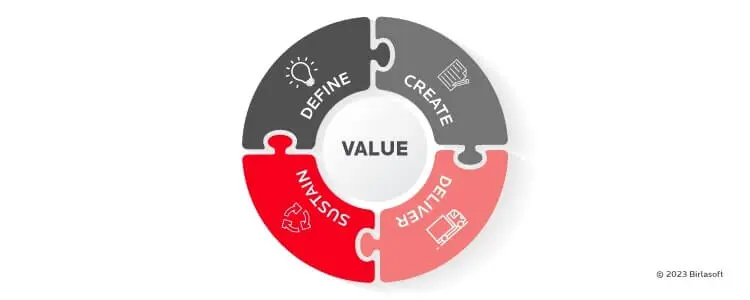
Enterprises would be well placed if they also understand that on-demand access to business data (all and any kind of business data) helps in making decisions and the right choices. The ERP solution is in essence a core component of the data architecture.
Birlasoft’s frameworks allow customers to decide on all kinds of deployments. We assist our customers to decide based on the value that could be generated by adopting one of these approaches.
Value Delivery
ERP deployments are not quick, but no enterprise can wait for years to reap the value. It is best to approach ERP deployments as a series of value delivery projects, as opposed to one whole deliverable.
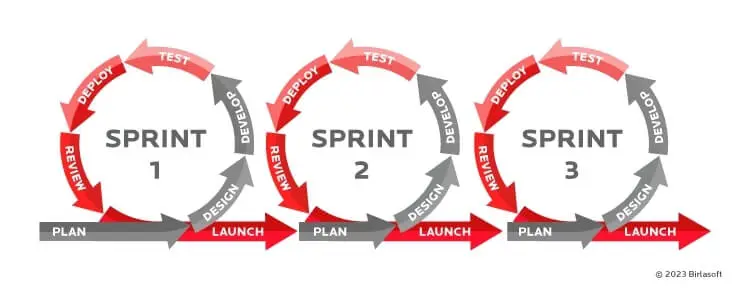
At each milestone there is a return on investment; it may only be a part of the total value but is enough to warrant support and funding for the next phase of transformation. The modular nature of next gen ERP systems allows for value delivery based on business functions. Enterprises need to adapt and realize that the traditional approach of long timelines is not necessary. Birlasoft’s frameworks allow customers to decide on the implementation options that best suit their needs. Approaches range from incremental global approach, a combined global model and a pilot-built approach, or an incremental global model build and roll-out approach.
Each approach is evaluated against risks and potential value created along with our customers before deciding on the best implementation model. Our project management methodologies based on industry best practices are flexible enough to accommodate any project management methodology that our customers would like to follow right from the waterfall approach to agile Devops approach and any combination that customers might need.
Value Assurance
To succeed in this journey, it is necessary to provide a framework for success. Some best practices will go a long way to ensure this. A strong governance is needed from design to rollout. A program management office will play a key role here. The PMO needs to foster collaboration between IT and business, provide transparency and should be involved in rapid decision making. Utilizing Agile ways of working becomes essential.
At Birlasoft, we believe that any large transformation program needs to be supported by a strong PMO. We use our Program Excellence & Service Mapping (PESM™) framework to assess the as-is state maturity of planned / ongoing programs & map them to the right service offerings to ensure maximum customer value & ROI. We also work with our customers to create a robust PMO and Governance framework that would best deliver value.
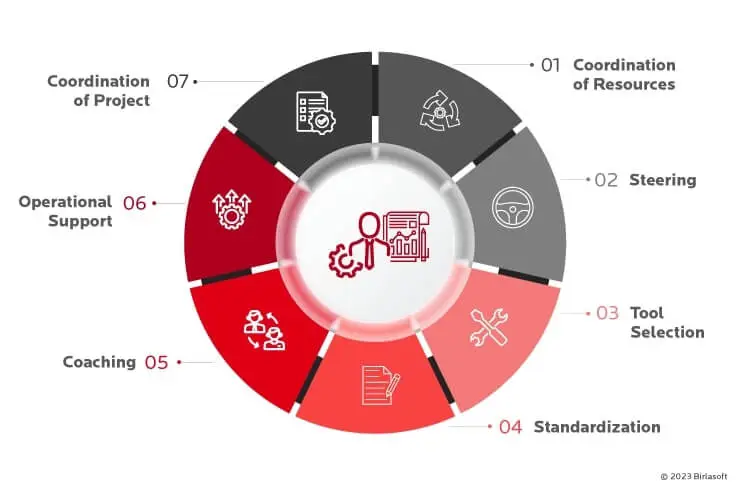
ERP transformation is often about replacement and very few enterprises look at it as an opportunity for innovation. That said, successful enterprises are always on the lookout for new ways to innovate their business. It is all about value creation; this same approach when used with ERP transformation results in value creation in areas that the enterprise did not think possible. The value creation can also be achieved quickly. Birlasoft’s proprietary frameworks coupled with industry best practices would ensure that the journey when described would then use better adjectives.
Recommended



